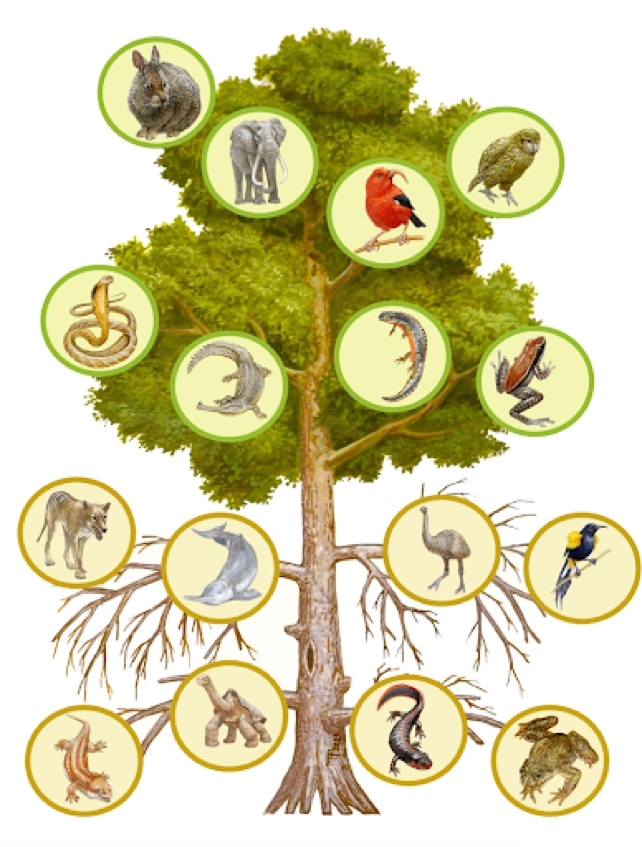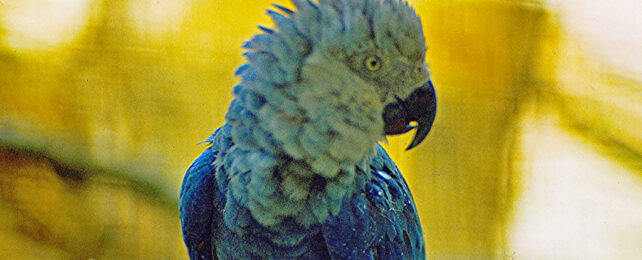Like the comet striking the dinosaurs – in slower motion, but just as deadly – human activity is hacking off entire branches from the tree of life, a new study confirms.
"It is changing the trajectory of evolution globally and destroying the conditions that make human life possible," ecologists warn in their new paper.
"It is an irreversible threat to the persistence of civilization and the livability of future environments for Homo sapiens."
Over the past few months the sixth mass extinction has become devastatingly visible.
Hundreds of fish found dead at Quintana Beach County Park https://t.co/3ymYBbpcXl pic.twitter.com/F6iWmE93Mh
— FOX26Houston (@FOX26Houston) June 10, 2023
We've witnessed mass seabird deaths, shores have been littered with droves of dead fish, and sea lions poisoned by heat-induced algal blooms. Last year entire populations of penguins failed to breed and for years now researchers have been investigating an alarming reduction in insect life.
So ecologist Gerardo Ceballos from the National Autonomous University of Mexico and Stanford University conservation biologist Paul Ehrlich assessed species extinctions since 1500 CE and compared those through the past 500 million years. They found we've driven 73 genera of back-boned animals to extinction during the last 500 years.
Genus is the taxonomic classification just above species, grouping together the most closely related organisms, much like siblings, in a family tree.
This rate is 35 times higher than previous genus-level extinctions.

Without human influence, it would have taken 18,000 years for the same number of genera to have met their end. Other studies have also found similarly high extinction rates for plant, fungi, and invertebrate life as well.
"[The sixth mass extinction] is causing rapid mutilation of the tree of life, where entire branches (collections of species, genera, families, and so on) and the functions they perform are being lost," explain the researchers.
Tens of thousands of fish washed ashore along the gulf coast of Texas starting on Friday after being starved of oxygen in warm water. "It doesn't take long for them to sit there in 90-degree heat to really rack up an unpleasant smell," an official said. https://t.co/FuTT7mx4mf pic.twitter.com/hkJyoxQz6e
— The New York Times (@nytimes) June 11, 2023
The biosphere we live within is extremely interconnected, so loss of species groups that play particular functions within their interconnected-living web can have severe cascading consequences.
"We and all other species have evolved together thriving within a stable tree of life," Ceballos and Ehrlich say, so the loss of entire ecological functions performed by groups of species directly impacts us too.
For example, the loss of mosquito-devouring frogs has occurred alongside increasing malaria infections in Central America.
What's more, this rate of genera loss is set to increase, Ceballos and Ehrlich calculate. If we continue on our current trajectory and all current endangered genera are snuffed from existence by 2100, the equivalent 300-year-loss since 1800 would have taken 106,000 years at normal background levels of extinction.
The most vulnerable species are usually the most unique, yet overlooked on the planet. Along with them we'll lose millions of years of evolutionary history, which can never be repeated, as well as the loss of critical functions they performed that helped keep all the surrounding biological cycles chugging on like a well oiled machine.
"[It] required millions of years for evolution to generate functional replacements for the extinct organisms," Ceballos and Ehrlich note.
#Birds
— Dr Tom Montgomery (@DrTOMontgomery) May 14, 2023
Hundreds of Little penguins lie dead, their tiny frames emaciated.
They had searched desperately for food but died from prolonged starvation, as ocean heating drove fish away.
It’s not insults from CC deniers that grieves me, it’s the stark reality of climate change. pic.twitter.com/AGxjhlAxBP
Climate change alone is creating a massive destabilization across these systems, scattering critical timing of ecosystem services like pollination, reducing the types of species and allowing new ones to invade more easily.
Another new study has documented these exact processes in an Arizonian dryland stream between 1985 and 2019.
"Our study provides evidence of climate change-induced modifications of mechanisms underpinning long-term community stability, resulting in an overall destabilizing effect," University of California ecologist Junna Wang and team write.
Yet the sixth mass extinction is far bigger than the massive cluster-catastrophe of climate change alone.
From plastics to pesticides, habitat loss, and poaching, we're not allowing the life around us to catch a break.
"Immediate political, economic, and social efforts of an unprecedented scale are essential if we are to prevent these extinctions and their societal impacts," say Ceballos and Ehrlich.
Unlike the comet that eliminated non-avian dinosaurs, we're conscious of our actions and we do have the ability to change course.
"What happens in the next two decades will very likely define the future of biodiversity and H. sapiens," the team concludes.
This research was published in PNAS.
